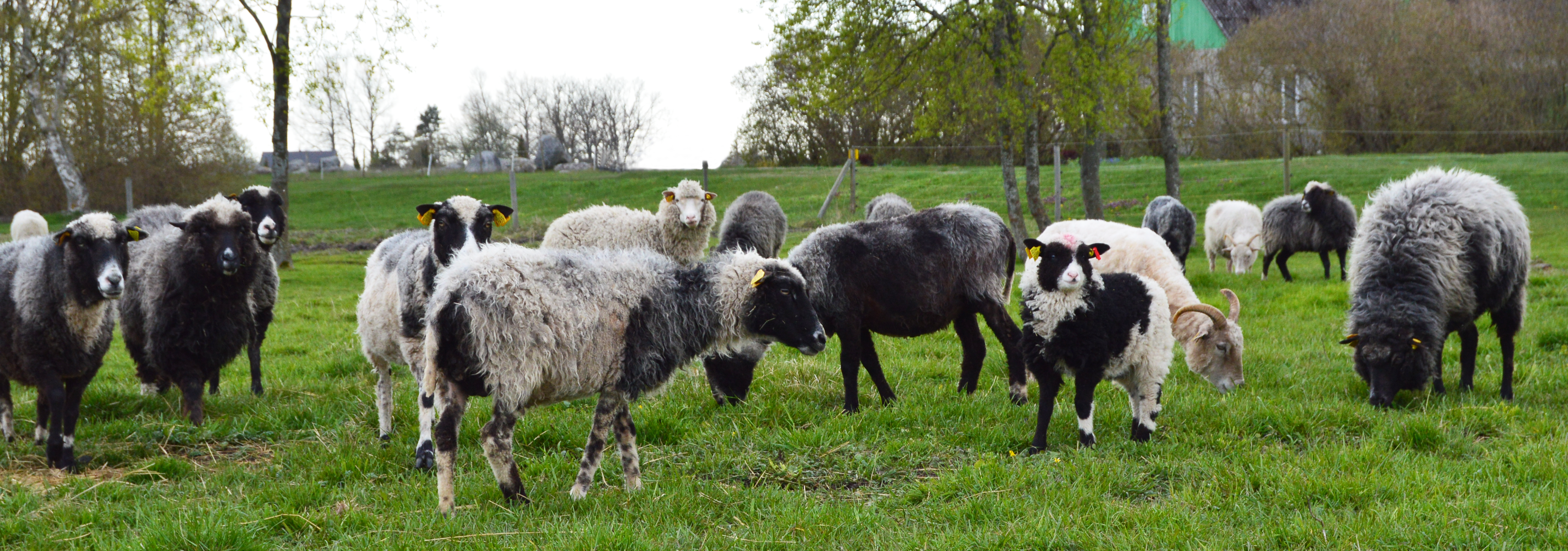The Kihnu native sheep is a local landrace breed. Initially, the Kihnu native was a pan-Estonian breed that could be found everywhere in the country. However, by the beginning of the 21st century, the breed had only survived on Kihnu Island

Descendent of the mouflon sheep, The Kihnu native sheep belongs to the group of Northern European short-tailed sheep who have been located in Northern Europe and the coast and islands of the Baltic Sea historically and today. According to the data published by archaeogeneticist Eve Rannamäe in 2016, the Kihnu native sheep have been living on Estonian territory for at least 3000 years. During this time, the breed has remained unchanged.
The Kihnu native sheep is a small sheep with thin legs and a short tail. A lot of the breed’s aboriginal features have survived, including its horns, wattles, strong maternal instinct, undemanding nature in terms of housing conditions, resistance to natural conditions and parasites. Their wool is white, grey, black or multicoloured. It has two layers and provides great thermo- and hydroregulation, which allows the animal to survive in all weather conditions. Another maintained feature of the Kihnu native sheep is the shedding of the underlying wool layer in spring.
Thanks to the research studies, accounting and breeding programmes launched by the Kihnu Native Sheep Breeders Society, the Kihnu native breed has survived to this day. The sheep was recognised as a breed in 2016 and was listed as an endangered species in 2019. The founders of the Kihnu Native Sheep Breeders Society had to work for 20 years in order for the state to acknowledge the significance of this unique landrace and understand that this breed is an important part of our cultural heritage, national identity, biodiversity and genetic assets.
Right now, there are over 800 Kihnu native sheep in performance testing, 300 of whom have been added to the herdbook. We will continue to maintain interbreed diversity to preserve all its features and prevent health problems specific to cultivated breeds.
The Kihnu native sheep is an environmentally friendly landscaper who leaves a small ecological footprint and provides a lot of high-quality produce. Due to its small body, meat factories are not interested in the Kihnu native. Its wool, bones and trophies are officially deemed as waste.
However, the Kihnu Native Sheep Breeders Society encourages and teaches keepers to use all of its produce in both traditional and innovative ways. The group aims to change the mindset of sheep farmers so that they would feed and clothe themselves with the products of their own animals and preserve the traditions and skills of sheep farming. Despite issues related to handling its produce at the official level, there is a demand for the produce of the Kihnu native and it is appreciated on the market.
See the full article in the April 2020 issue of Eesti Loodus (Estonian Nature), pp. 20-22
Author: Anneli Ärmpalu-Idvand - veterinarian, sheep breeder, founding member of the Kihnu Native Sheep Breeders Society
Editor: Kaari Uibomägi